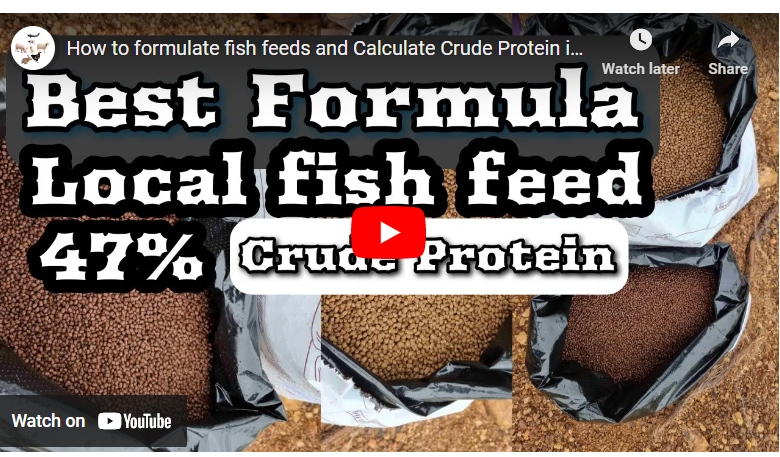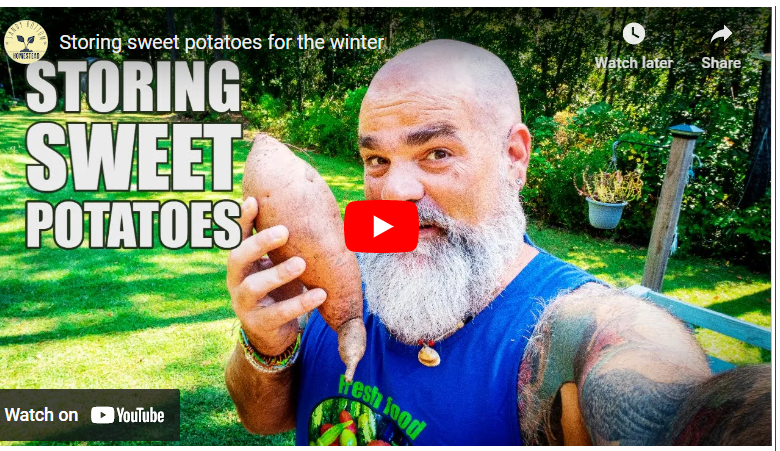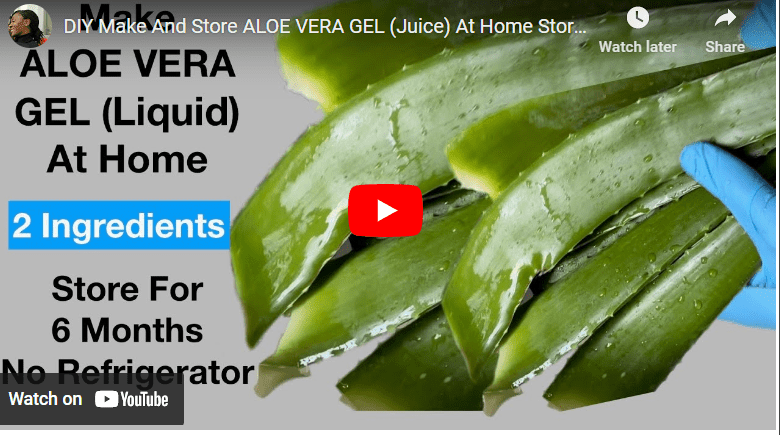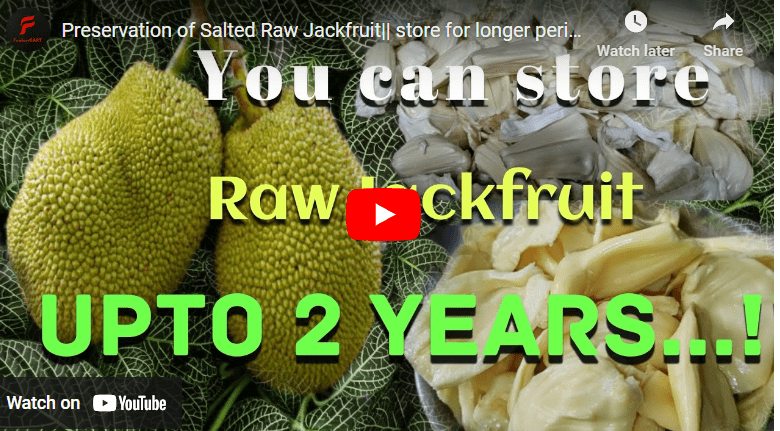Fish farming is an increasingly important industry in Uganda, with a growing demand for locally produced, sustainable seafood. Formulating high-quality fish feed is a crucial part of this industry, as it directly impacts the growth, health, and profitability of the fish.
Developing a nutritionally balanced, cost-effective, and environmentally sustainable fish feed requires careful planning, ingredient selection, mixing, pelletizing, quality control, and storage.
In this process, understanding the nutritional requirements of the target fish species is paramount, as is selecting the appropriate ingredients and determining their proportions.
By following these steps and continuously monitoring the feed formulation, aquaculture producers can ensure the growth and success of their fish farming operations.
How To Formulate Fish Feed in Uganda Step By Step Guide
To produce high-quality fish feed that meets the nutritional requirements of the target fish species in Nigeria, a series of steps must be followed.
These steps are crucial in ensuring the success of the aquaculture industry in the country. The following step-by-step instruction involved in formulating fish feed in Uganda:
Read Also: [Beginners Guide] How To Formulate Fish Feed In South Africa
Step 1. Learn the Nutritional Requirements of the Fish Species
To start formulating fish feed, you need to identify the nutritional needs of the specific fish species you’re targeting. One way to identify the nutritional needs of the fish species is by consulting relevant research papers and studies.
These resources can provide valuable information about the types and amounts of nutrients needed by the fish to support their growth and health.
Read Also: [Beginners Guide] How To Formulate Fish Feed In Ghana
Another option is to seek out the advice of aquaculture experts in Uganda. These professionals can offer insights and recommendations based on their experience working with fish and formulating feeds for various species.
When determining the nutritional requirements of the fish species, it’s important to take into account several factors, including the fish’s life stage, growth rate, and environmental conditions.
Read Also: [Beginners Guide] How To Formulate Feed For Snail
For example, young fish may require different nutrients than adult fish, and fish in warmer water may need different levels of certain nutrients than those in cooler water.
Step 2. Gather the Ingredients Needed
Once you’ve identified the nutritional requirements of the fish species, select the appropriate ingredients to meet those needs. In Uganda, common ingredients in fish feed include:
- Fishmeal: A high-protein ingredient made from fish that is often used as the primary source of protein in fish feed.
- Soybean Meal: Another high-protein ingredient that is often used in combination with fishmeal to provide a well-rounded protein profile in the feed.
- Maize: A source of carbohydrates that provides energy for the fish.
- Rice Bran: Another source of carbohydrates that also contains important vitamins and minerals.
- Vegetable Oil: A source of fat that provides energy and essential fatty acids for the fish.
- Vitamin and Mineral Supplements: These are added to the feed to ensure that the fish receive all of the necessary vitamins and minerals for their health and growth.
You can purchase these ingredients from a reliable vendour in the local market near you. Ensure you buy high quality ingredients.
Step 3. Determine the Proportion of Each Ingredient
Determine the proportion of each ingredient needed to meet the nutritional requirements of the fish species.
This can be done using mathematical models or specialized software. Consider the digestibility and availability of the nutrients in the ingredients, as well as the feeding behavior of the fish species.
Read Also: [Beginners Guide] How To Formulate Feed For Snail South Africa
Step 4. Blend the Ingredients
Once the proportions of each ingredient have been determined, mix them together in the appropriate ratios to achieve the desired nutrient composition of the fish feed.
To mix and blend fish feed in Uganda, the following steps can be followed:
- Prepare the ingredients: Collect all of the necessary ingredients based on the specific fish species and their nutritional requirements. Ensure that each ingredient is clean and free from contaminants.
- Measure the ingredients: Use a weighing scale to measure the required quantities of each ingredient according to the predetermined formula or recipe.
- Grind the ingredients: If necessary, grind certain ingredients such as maize, rice bran or wheat to make them more digestible for the fish.
- Mix the ingredients: Thoroughly mix all of the measured ingredients in a large mixing bowl or container. Use a spatula or mixing paddle to ensure that all of the ingredients are evenly distributed.
- Add water: Slowly add water to the mixture while continuing to stir until the mixture reaches the desired consistency. The amount of water required will depend on the specific ingredients used and the desired texture of the final feed.
- Allow the feed to rest: Allow the mixture to rest for a few minutes to allow the water to be fully absorbed by the ingredients.
Read Also: [Beginners Guide] How To Formulate Feed For Snail In the US
Blending and mixing can be done manually or with the aid of a mechanical mixer. Ensure that the nutrients are evenly distributed throughout the feed mixture.
Step 5. Pelletize the Feed
Use an extruder or pelletizer to shape the mixture into pellets of the desired size and shape. Alternatively, the mixture can be shaped into balls or flattened into sheets.
Pelletizing improves the digestibility of the feed and makes it easier to handle and store. Adjust the size and shape of the pellets to meet the needs of the fish species.
Read Also: [Beginners Guide] How To Formulate Feed For Snail In Ghana
Step 6. Dry the Feed
Dry the extruded pellets or shaped feed using a dryer or under the sun to remove excess moisture and ensure long shelf life.
Step 7. Test The Feed
Implement quality control measures to ensure the final product meets the desired nutrient composition and is free from contaminants.
Test for nutrient content, particle size, moisture content, and potential toxins or pathogens such as salmonella or aflatoxins. Regularly monitor the quality of the feed to maintain its high standards.
Read Also: [Beginners Guide] How To Formulate Feed For Snail In Nigeria
Step 8. Packaging And Storage
Once the feed is pelletized and tested, package it in appropriate packaging material and store it in a cool, dry place.
Label each package with the date of production and the nutrient composition of the feed to ensure easy tracking.
Proper storage ensures the feed remains fresh and free from contamination until it’s used.
Essential Equipment Needed to Formulate Fish Feeds
- Weighing scale
- Mixing bowl or container
- Mixing paddle or spatula
- Extruder or pelletizer
- Dryer or drying rack
- Airtight containers for storage
- Personal protective equipment such as gloves, goggles, and masks.
Best Practices of Formulating Fish Feed in Uganda
- Follow established formulations or recipes to ensure that the feed meets the nutritional requirements of the target fish species.
- Use high-quality ingredients that are free from contaminants.
- Ensure that all equipment is properly cleaned and sanitized before use to prevent contamination.
- Measure ingredients accurately to ensure that the feed has the desired nutrient composition.
- Monitor the quality of the feed regularly to ensure that it meets the required standards.
- Store the feed in a cool, dry place to prevent spoilage and degradation of nutrients.
- Continuously evaluate and improve the formulation process to ensure that the feed meets the changing needs of the fish and the market.
Benefits Of Formulating Fish Feed in Uganda
- Control over the quality and composition of the feed, ensuring that it meets the specific nutritional needs of the target fish species.
- Ability to use locally available and affordable ingredients, reducing the cost of feed production.
- Opportunity to create custom feed formulations to meet the specific needs of different fish species and life stages.
- Improved feed conversion efficiency and growth rates, leading to increased profits for farmers.
- Reduction in reliance on imported feed and associated costs.
- Promotion of sustainable aquaculture practices.
Disadvantages of Formulating Fish Feed in Uganda
- High initial costs associated with equipment and ingredient sourcing.
- Need for specialized knowledge and expertise in feed formulation and aquaculture practices.
- Risks associated with improper formulation and nutrient imbalances, which can lead to reduced growth rates, disease, and mortality.
- Time-consuming process, requiring careful attention to detail and monitoring.
- Limited availability of certain ingredients, which can restrict formulation options.
Where to Sell Fish Feed in Uganda
- Local fish farmers and hatcheries.
- Aquaculture associations and cooperatives.
- Agro-input stores and suppliers.
- Agricultural markets and trade shows.
- Online marketplaces and social media platforms.
Cost of Formulating Fish Feed in Uganda
The cost of formulating fish feed in Uganda depends on several factors, including the cost and availability of ingredients, equipment costs, and labor costs.
However, generally, the cost of formulating fish feed in Uganda is lower compared to imported feeds, and it can vary between UGX 2,500 – UGX 4,000 ($0.7 – $1.1) per kilogram.
Challenges of Formulating Fish Feed in Uganda:
- Limited availability and high cost of some essential ingredients.
- Inconsistent ingredient quality and availability.
- Inadequate technical knowledge and expertise among farmers and feed producers.
- Lack of regulation and standardization in the industry.
- Limited access to funding and credit facilities.
- Lack of adequate infrastructure and equipment for feed production and distribution.
- Limited market access and competition from imported feeds.
Measures to Take When Formulating Fish Feed
- Properly store ingredients to prevent contamination and spoilage.
- Ensure accurate measurement of ingredients to avoid nutrient imbalances.
- Monitor and adjust the formulation as needed to meet the changing needs of the fish and the market.
- Implement quality control measures to ensure that the feed meets the required standards.
- Continuously improve the formulation process to maximize efficiency and effectiveness.
Fish Feed Formulation PDF
Fish feed formulation PDFs are available online and provide detailed information on the nutritional requirements of different fish species, the composition of different types of feed ingredients, and the formulation process.
These PDFs are useful for both small and large-scale fish farmers and feed producers who want to formulate their own feed to meet the specific nutritional needs of their fish species.
How to Make Fish Feed at Home
To make fish feed at home, you will need to follow the basic steps of fish feed formulation, which include identifying the nutritional requirements of the target fish species, selecting high-quality ingredients, mixing the ingredients in the right proportions, and processing the feed using an extruder or pelletizer.
Home-made fish feed can be an affordable and sustainable option for small-scale fish farmers who want to reduce their reliance on imported feeds.
Requirements for Fish Farming
To start fish farming, you will need suitable land or access to a water source, appropriate fish species for the local climate and market, fish farming equipment such as nets, tanks or ponds, and feed for the fish.
Additionally, you will need knowledge and skills in fish farming practices, disease management, and marketing.
Compliance with regulatory and environmental standards is also essential for successful and sustainable fish farming.
Fish Feed Business Plan PDF
A fish feed business plan PDF provides a comprehensive outline of the steps involved in starting and operating a fish feed production business.
It includes information on market analysis, financial planning, production processes, equipment and material sourcing, regulatory compliance, and marketing and distribution strategies.
A well-developed business plan is critical for securing funding and attracting investors for the fish feed production business.
How to Formulate Fish Feed Locally
To formulate fish feed locally, you need to identify the nutritional requirements of the target fish species and select locally available and affordable feed ingredients that meet those requirements.
Some of the commonly used local feed ingredients include maize, wheat, soybean, cassava, fishmeal, and poultry by-products. It is also essential to ensure accurate measurement of ingredients, proper mixing, and processing using suitable equipment.
Local formulation of fish feed can provide farmers with more affordable and sustainable feed options, reduce reliance on imported feeds, and promote local economic development.
Conclusion
Formulating fish feed in Uganda requires careful consideration of the nutritional needs of the fish species being farmed, as well as the availability and affordability of ingredients. It is important to ensure that the feed is of high quality and does not contain harmful substances. By following these guidelines, fish farmers in Uganda can produce healthy and profitable fish while contributing to the growth of the aquaculture industry in the country.




